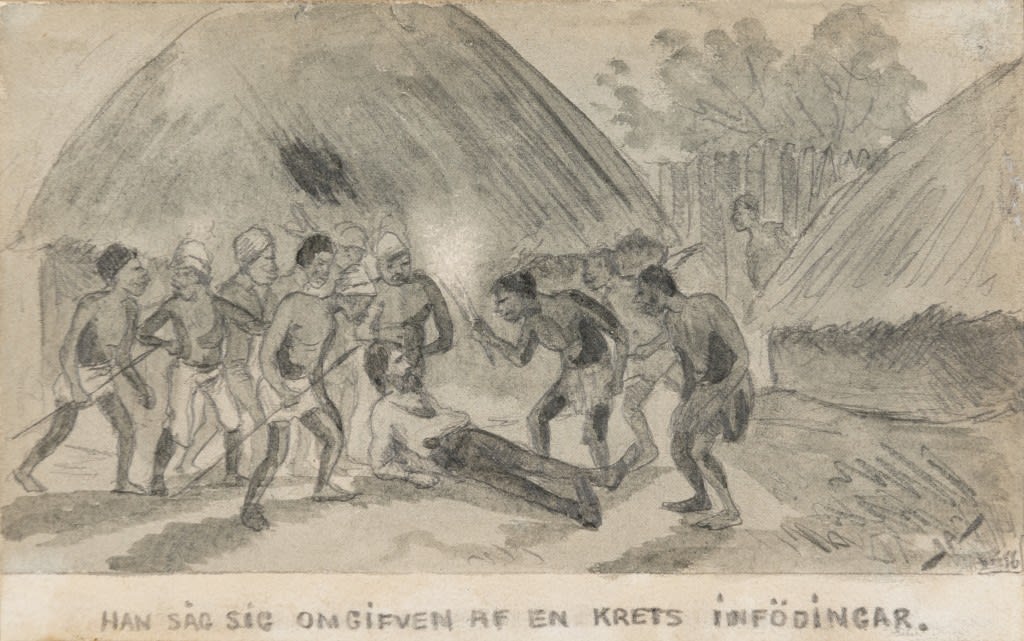Ivar Arosenius Swedish, 1878-1909
An illustration of Robinson Crusoe, 1896
Graphite and rubbing on paper
8.5 x 14 cm
3 3/8 x 5 1/2 in
3 3/8 x 5 1/2 in
Clase Fine Art
His congenital haemophilia meant that Ivar Arosenius was robbed of one of childhood’s greatest privileges - fearlessness in the face of death. From his youngest years, he was obliged to...
His congenital haemophilia meant that Ivar Arosenius was robbed of one of childhood’s greatest privileges - fearlessness in the face of death. From his youngest years, he was obliged to remain calm and still, to avoid contracting wounds and bleeding fatally. This enforced physical passivity also meant that he could get extremely angry with his illness.
Arosenius read everything that he could get hold of: fairytales, history books, poetry. He also began to draw and paint from an early age. Many of these pictures from his childhood depict fights and battles. The present drawing is an example of adventures the that were out of reach for him. At the National Museum in Stockholm there are some small cut-out paper figures that Arosenius created in parallel with his early drawings.
Arosenius frequently dates his works incorrectly and this is likely to be one such case, where the work would have been made earlier than the dating of "96" indicates.
Arosenius read everything that he could get hold of: fairytales, history books, poetry. He also began to draw and paint from an early age. Many of these pictures from his childhood depict fights and battles. The present drawing is an example of adventures the that were out of reach for him. At the National Museum in Stockholm there are some small cut-out paper figures that Arosenius created in parallel with his early drawings.
Arosenius frequently dates his works incorrectly and this is likely to be one such case, where the work would have been made earlier than the dating of "96" indicates.
Provenance
Possibly Erik Arosenius, Ivar's brother, who certified the drawing on 30th March 1931 (on the old backboard);Kar de Mumma (Erik Harald Zetterström - Swedish writer and actor);
By whom gifted to "Esther och Harry" in 1937 (according to a note by Kar de Mumma on the old backboard);
Then possibly by descent until 2005;
Little Bukowski's sale, Stockholm, Sweden, circa 2005.




